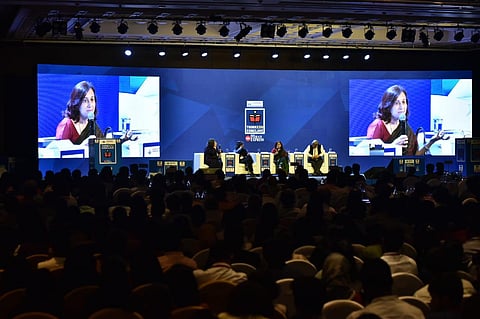

About 95% of the estimated 40 million ancient manuscripts that India has are yet to be translated, said Bibek Debroy, economist and author, on the first day of the two-day ThinkEdu Conclave.
While this massive number of manuscripts shines in comparison to the 10,000 to 20,000 texts of the Greek corpus, much of Indian work in the fields of science and mathematics is yet to be discovered with some of these manuscripts being in scripts that no one here is capable of reading, said Debroy.
“We had to send six people to Heidelberg (Heidelberg University in Germany) to learn the Sharada script,” said Debroy who was part of a three-member panel — alongside Arnab Bhattacharya, scientist at the Tata Institute of Fundamental Research and Gitanjali JB, CEO of Himalayan Institute of Alternatives, Ladakh — speaking on the topic ‘Does India’s History have a Place in Tomorrow’s Science?’. Chairing the panel of speakers, was senior journalist Kaveree Bamzai.
On the same lines, Arnab Bhattacharya said that some of the work done in the country predated the West by a couple of centuries.
More important than the invention of zero, for which the highest praise is often reserved, is the concept of infinity. Without the formal concept of a limit, there could not have been calculus, he said. Referring to Biva Choudhuri’s work between 1939 and 1942, where he along with DM Bose exposed photo plates in the hill stations of Darjeeling, he said that Cecil Powell, for his work five years later in the development of the photographic method of studying nuclear processes and for the resulting discovery of the pion, was awarded the Nobel Prize while the work of these scientists are often overlooked.
Forehead flap rhinoplasty was practised by Indian physician Sushruta in ancient India — a technique still used by modern plastic surgeons of today. However, connecting these concepts of plastic surgery that existed in the past to myths such as Lord Ganesha’s elephant head is where the problem lies, he added.
Drawing from her own experiences, Gitanjali JB said that palaces with mud architecture, practised in ancient India, stood strong for as long as 1,500 years while cement houses lasted for a mere 70-100 years.